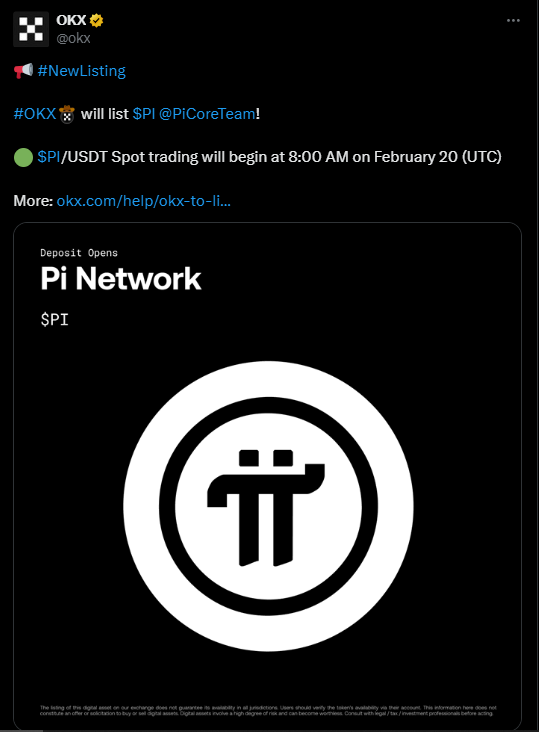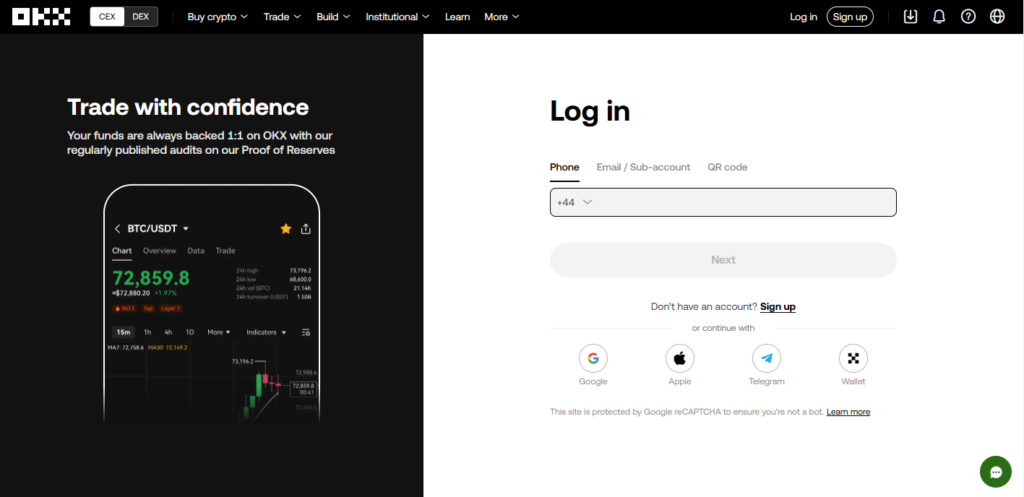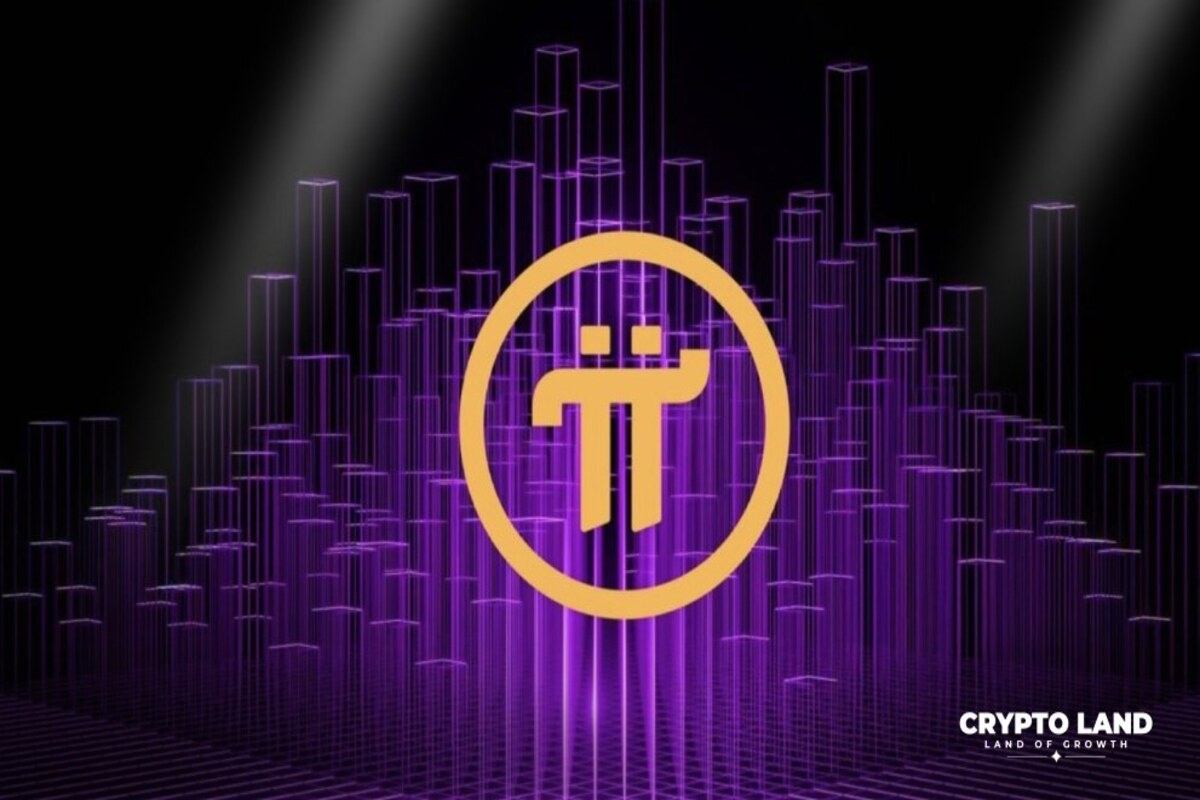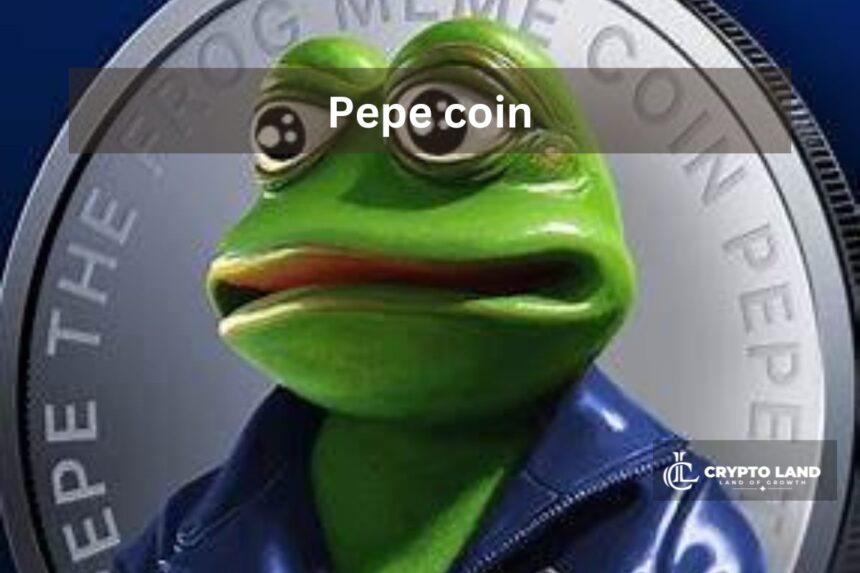Key Takeaways
- The Pi Network is a new and exciting paradigm shift when it comes to crypto.
- It brings back mining to the average person compared to other networks
- The Pi network is set to launch on the mainnet on 20 February of this year.
- So far, some of the supported exchanges include OKX and BitGet, even though Binance may not be far behind.
- Once the KYC procedure is complete, buying and selling Pi should be straightforward for these exchanges.
Pi Network has become wildly popular over the years, and its growth hasn’t been about hype alone. This network promises to completely change the way we mine and use crypto.
Now, after years of speculation and waiting, Pi Network is fast approaching one of its biggest milestones: the launch of its Open Mainnet.
Here’s everything to know about Pi Network, its upcoming launch, how to buy some, as well as where to do so.
What Is Pi Network?
Pi Network is a blockchain-based platform that allows users to mine its main cryptocurrency ($PI) using their smartphones. This alone makes it wildly different from the modelling of other networks like Bitcoin and Dogecoin, which require heavy machinery to mine.
The main appeal of the Pi Network is that it brings mobile mining to the average person without having to spend thousands on expensive mining rigs.
The Pi Network’s approach to mobile mining has been one of its biggest selling points, bringing in millions of users annually. This massive user base is now preparing for the network’s transition from its enclosed network to its Open Network.
The Pi Network’s Open Mainnet Launch
Pi Network has been in a closed phase so far since December 2021. This phase is known as the “Enclosed network” and restricts the network from interacting with external blockchains.
This prevented users from using or even interacting with Pi outside the network. However, this is about to change with the Pi Network’s transition to the “Open Network” phase.
When this transition happens, the blockchain will be fully accessible to external networks and enable transactions across the Pi ecosystem.
The Open Network phase is set for launch on 20 February of this year and is one of the most anticipated events for the Pi Community. This community is made up of millions of users (who call themselves Pioneers).
These Pioneers have been accumulating the cryptocurrency over the years and will finally have the chance to use their coins in real-world scenarios.
They will also be able to trade them on external exchanges and amongst themselves in P2P transactions.
What’s New With The Open Network?
The shift to an Open Network marks a major development for Pi Network.
One of the main features of this new phase is that it allows Pi to interact with the outside world. This includes external applications and even businesses.
It also makes the $PI coin available for trading on centralized and decentralized exchanges. This has been one of the biggest milestones for the network, which had been in development for years.
The launch of the Open Network will also allow external developers to build new applications directly on the Pi Network. This would do much to increase its use cases and user adoption. Its Total Value Locked (TVL) will skyrocket as developers launch DApps across several industries like healthcare, finance, education and so much more.
Additionally, the Pi network will also allow anyone to run a node on the mainnet blockchain once the firewall has been lifted.
It should be noted, though, that the network will favour the migration of experienced users from the testnet to the inexperienced ones. The desktop node UI will manage this process, which may require considerable technical skill to complete.
Listing Challenges And Exchange Support
Despite the excitement around the Pi Network’s Open Mainnet launch, however, the project has been through some criticisms from the crypto community.
There have been concerns about the project’s model, which critics have compared to a multi-level marketing (or MLM) scheme.
As a result, major crypto exchanges have been hesitant to list the cryptocurrency.
For example, Ben Zhou—the CEO of Bybit—publicly expressed this sentiment, especially with the “negative experiences” with similar projects.
Meanwhile, Bitget and HTX (also known as Huobi) have distanced themselves in a similar fashion from the Pi network in the past.
Some exchanges have also removed promotional content posted previously about the platform.
Despite these challenges, however, Pi Network has secured support from Bitget and OKX (which are some of the biggest crypto exchanges).

OKX has so far confirmed its listing and has begun allowing deposits of Pi Coin since 12 February. Spot trading is expected to begin sometime on 20 February, with withdrawals being available from 21 February.
Everything To Know About Pi Coin IOUs
Before the actual $PI hits exchanges, some platforms have begun the trading of speculative assets known as Pi IOUs.
These assets stand as placeholder tokens, which represent a promise by the exchange to swap them for actual coins once the Open Mainnet launches. However, it is important to note that Pi Coin IOUs are not the same as real Pi tokens and do not hold any intrinsic value: At least, not until they are converted into actual Pi tokens.
These IOUs have created a speculative frenzy so far, with traders betting on the future value of Pi Coin before the mainnet launch.
Investors must understand that the trading of Pi IOUs comes with its own set of risks, considering how they do not guarantee any real value until the real Pi hits the mainnet.
How To Buy Pi Coin?
Once the official Pi Coin officially hits exchanges, buying it will be as straightforward as possible.
However, here are a few steps to follow before the frenzy begins.
Step 1: Sign Up for a Supported Exchange
The first step to buying some Pi is information. Make your findings about which exchanges will (or will not) list Pi. Some of the most popular ones that support Pi include OKX and Bitget.

Once you have made a choice, consider creating an account and setting up KYC. This might involve the upload of documents like an ID card or a selfie.
Step 2: Deposit Funds
The supported trading pairs for Pi will likely be against Tether (USDT). Consider funding your exchange account with some USDT via bank transfer, credit card, or funding from another wallet. Once trading goes live, you will be able to purchase Pi.
Step 3: Wait for Trading to Begin
Pi trading will officially begin on February 20 at 8:00 AM UTC. However, before the real trading session starts, there will be a “call auction” period from 7:00 to 8:00 AM UTC, where you can place buy or sell orders.
Step 4: Place Your Order
Have a good idea of how much Pi you would like to buy, and stick to the plan. Understand that Pi will experience massive waves of volatility once trading is live.
To this end, be prepared for wild price swings.
Step 5: Withdraw Your Coins
Once you have successfully bought your coins, you can go ahead and withdraw to a secure wallet as soon as withdrawals open on 21 February.







